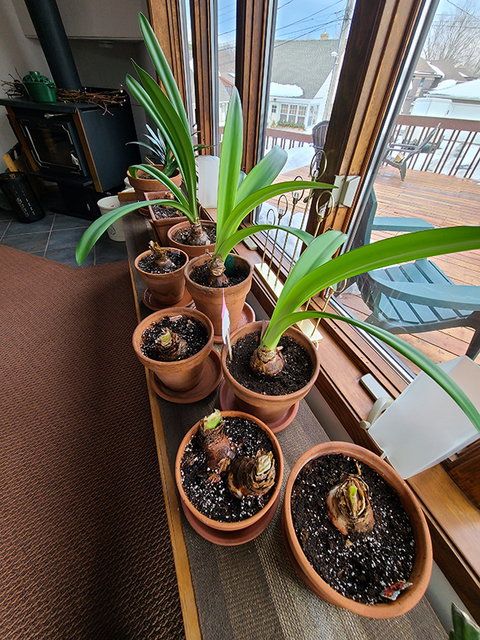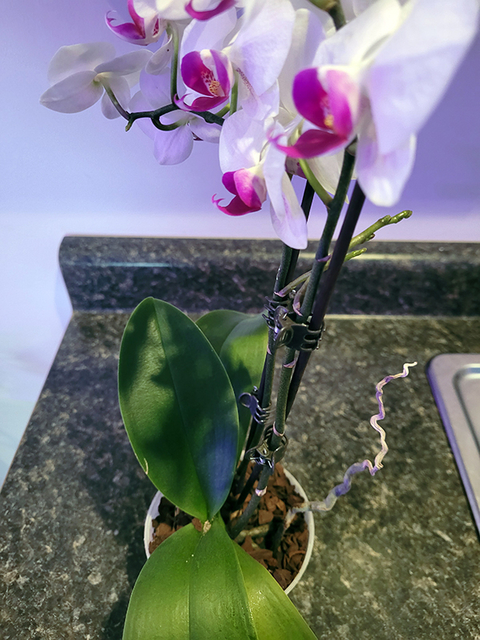Watering houseplants
UNIVERSITY OF MINNESOTA EXTENSION - www.extension.umn.edu
Amaryllis bulbs grow best if the soil is allowed to dry out between waterings. If the soil is too wet, the bulbs will rot.
People do love their houseplants and are responsible for their survival. However, sometimes TLC (tender loving care) can turn into TMC (too much care) especially when it comes to watering. Overwatering or letting plants sit in water can result in root rot, yellowing leaves or a fungus gnat invasion.
When you move plants indoors for the winter, they may not require as much water at first. They need time to adjust to the change in their growing environment which slows down active growth at least for a while.
It would be great if plants followed a calendar when it came to watering needs, but they don’t and you shouldn’t either. Instead, here are guidelines about watering your indoor plants.
Water if your plant is dry
Good watering starts with understanding the watering needs of your plants. You can judge whether a plant needs watering in several ways. Start by feeling the top few inches of soil and water if the soil is dry. You can also lift a potted plant — if it’s light, it is dry; if heavy, the soil is still moist.
A wilted plant can also indicate a lack of water. But if a plant is wilted and the soil is moist, the plant could be experiencing loss of roots (or “root rot”) from constantly wet soil. Wet soil lacks air and roots need oxygen to grow well.
Not all plants do well being watered from the top. Plants with hairy leaves or plants in soilless mixes can be watered from the bottom. Place the plant in its pot in a plastic container and add water until the holes are covered. The soil will absorb and take up water over a few hours, saturating the potting media.
Good drainage is everything
As houseplants, we grow moth orchids (Phalaenopsis) in bark to provide moisture and adequate air to the roots.
Houseplants should be planted in well-drained growing media such as good-quality potting soil (not garden soil) or fir bark for some orchids and other epiphytes.
If your plant is growing in a well-drained pot, it can tolerate some neglect. But a plant in a pot that has poor or no drainage is doomed. A well-drained pot has at least one large drainage hole in the bottom; some may have several holes.
If your plant is double-potted (a plain nursery pot sitting in a second, decorative pot), remove the plant from the decorative pot and set it in the sink to water. Allow it to drain completely, then set it back into the decorative pot.
Don't put stones or shards of pottery in the bottom of the pot. They take up valuable root growing space.
Water quality makes a difference
What is in your water can affect houseplant health. Municipal water may be treated with fluoride and other additives that can negatively affect some plants like orchids and peace lilies. Chlorine is a micronutrient required by plants, and the amount of chlorine in most drinking water is below any toxic levels for plants. Chlorine also dissipates when exposed to air. If you have a municipal water source, consider saving rainwater or buying filtered water for watering sensitive plants.
Hard water can result in mineral buildup on soil surfaces. Avoid this by using water low in minerals and flushing plant soil with pure water every 4 to 6 months. Repot plants if the soil becomes crusty and scrub pots to remove mineral buildup.
Fertilizing when plants are actively growing
Your plant’s growing environment — light, humidity, temperature — changes when it is brought indoors for the winter. Plants need to acclimate to their new indoor environment. This can cause some plants to drop leaves and buds, or to stop growing temporarily.
Hold off adding fertilizer to your water until you see new growth on your plants — new leaves, roots, buds, and stems. When you do fertilize, use an all-purpose fertilizer for most plants.
Fertilizers are made of salts. Mix half the recommended strength with water every 2-3 times you water to avoid excess salts building up in plant soil and leaf tips.


